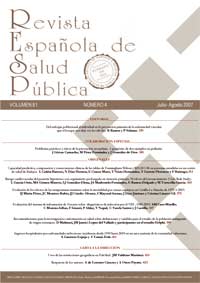Trends in Effects of Maximum Temperatures on Organic-Cause Mortality in Castile- La Mancha, Spain from 1975 to 2003
Abstract
Background: Non-lineal temperature-mortality relationship varies depending on the characteristics of the designated study geographic zone. In given places, a growing level of economic development has led to lesser influence of environmental variables on mortality. This paper analyzes trends in the association between maximum temperatures and organic-cause mortality from 1975 to 2003 in Castile- La Mancha (Spain). Methods: Daily maximum temperatures and organic-cause mortality data were divided into 3 time period: 1975-1984, 1985-1994 and 1995-2003. After data pre-whitening by applying ARIMA model estimated for the daily maximum temperature series, we calculate cross-correlation functions between residuals of temperature and mortality, 7 days lagged for summer, 15 for cold months, and comparing its correlation coefficients. Results: We observe an increasing number of significant lags during the warm season (p<0.05) between first and second decades studied in regional overall but with some provincial differences. In the third study period the number of significant lags varies slightly, although cross correlation coefficients were significantly upward (p<0.05) at lag 3 in the entire region and Toledo in particular. Conclusions: Maximum temperature and mortality by organic cause association became more extensive and intense since 1975-1984 decade in Castile- La Mancha. The aging of regional population could offset the probable beneficial effect of economic growth on this relationship. No appreciable time trends are found in cold months.Downloads
Published
2008-03-14
Issue
Section
ORIGINALS

